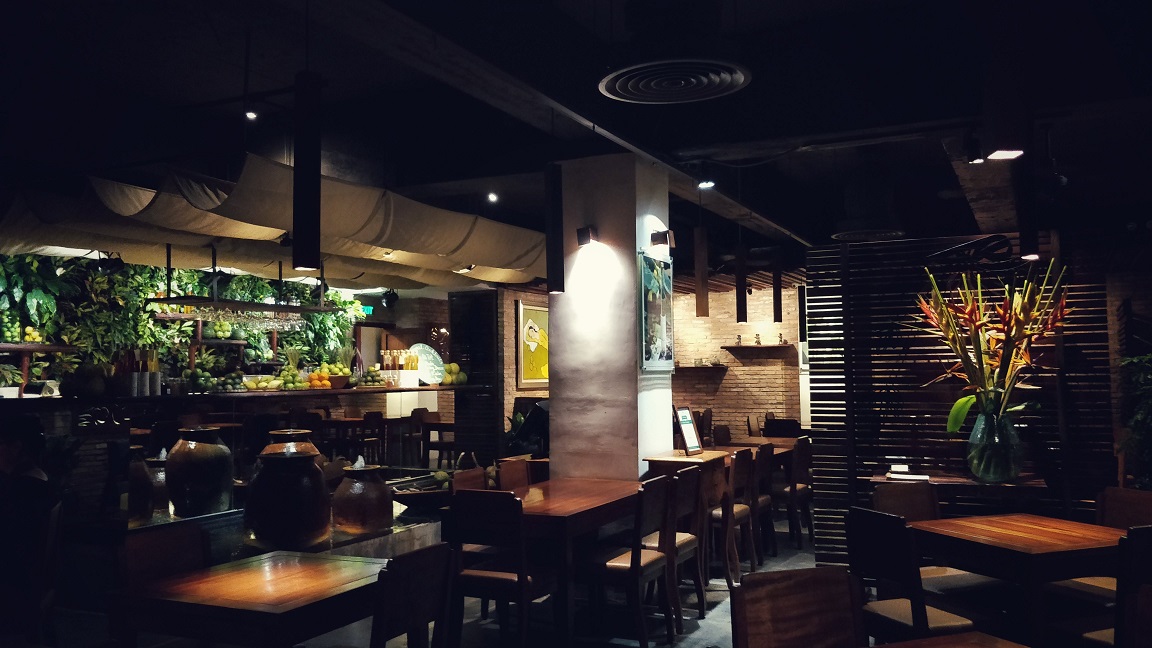Best Ambiance Restaurants Islamabad: Perfect Destinations for an Unforgettable Dish
Best Ambiance Restaurants Islamabad: Perfect Destinations for an Unforgettable Dish
Blog Article
Savor Genuine Oriental Cuisine With a Pan-Asian Spin for a Cooking Experience
Starting a cooking journey through authentic Eastern cuisine, enhanced with a Pan-Asian spin, uses an unique opportunity to check out the rich tapestry of tastes that specify the region's diverse cooking traditions. This experience welcomes you to savor the beautiful balance of preferences-- wonderful, salty, spicy, and sour-- integrated by fragrant herbs and flavors. Picture the innovative combination of Thai curry and ramen or the unexpected joy of sushi burritos. As you contemplate these attracting recipes, consider the cultural stories and historical influences that form them, each bite using a story waiting to be uncovered.

Discovering Pan-Asian Flavors
In the realm of worldwide gastronomy, Pan-Asian food stands apart for its amazing diversity and the unified interplay of tastes from numerous Eastern cultures. This culinary method celebrates the rich practices and special active ingredients found across the continent, developing a tapestry of preferences that is both enjoyable and intriguing. Key to Pan-Asian cuisine is its capability to stabilize contrasting tastes-- pleasant, salted, spicy, and sour-- while highlighting the freshness and quality of each component.
From the umami-rich soy sauce of Japan to the intense chili peppers of Thailand, Pan-Asian cuisine provides a substantial combination of flavors. These aspects are frequently combined in inventive means, improving meals with layers of complexity. As an example, using great smelling natural herbs such as lemongrass and cilantro, typical in Vietnamese and Thai food, includes a rejuvenating illumination to meals, while the unification of coconut milk supplies a luscious, abundant appearance.
The focus on fresh fruit and vegetables and fragrant seasonings guarantees that each meal is not just a banquet for the taste but likewise for the detects. Pan-Asian cuisine invites diners to get started on a culinary trip, checking out the vast and differed landscapes of Eastern gastronomy with every bite.
Blend Meals to Attempt
While Pan-Asian cuisine is celebrated for its conventional tastes, the modern culinary landscape is significantly embracing fusion meals that mix these traditional components with impacts from various other regions. This cutting-edge method not only honors the rich heritage of Eastern cookeries yet also introduces unique taste experiences that appeal to contemporary tastes.
A prime example of such a blend recipe is the Korean-Mexican taco, where marinated bulgogi beef is wrapped in a warm tortilla, covered with kimchi and a zesty gochujang-infused salsa. This combination marries the strong, mouthwatering flavors of Korea with the vivid, fresh elements of Mexican food. Likewise, sushi burritos have gained popularity, amalgamating the fragile creativity of Japanese sushi with the passionate, hand-held ease of a burrito, commonly featuring combination ingredients like tempura shrimp and avocado with a drizzle of wasabi mayo.
Another noteworthy recipe is Thai curry ramen, which infuses the velvety, fragrant seasonings of Thai curry right into the calming brew of typical Japanese ramen, producing a harmonious blend that entices the senses. These blend recipes extend beyond simple uniqueness; they represent a cooking discussion between cultures, motivating exploration and advancement worldwide of Pan-Asian cuisine.
Vital Ingredients and Flavors
To absolutely appreciate Pan-Asian food, one should understand the necessary components and flavors that form its foundation. This varied cooking style attracts from a rich tapestry of Eastern traditions, employing an unified blend of flavors and textures.
Aromatic aspects are critical, with lemongrass, ginger, and garlic being ubiquitous across various Pan-Asian dishes. These active ingredients supply an aromatic base that boosts the complexity of flavors. Flavors such as star anise, cardamom, and cinnamon present warmth and character, echoing influences from regions like China and India.

Cooking Methods and Tips
Mastering the art of Pan-Asian cuisine needs knowledge with its distinctive cooking strategies, each contributing to the lively tapestry of flavors this culinary practice is celebrated for. Central to these methods is the stir-fry, a quick food preparation technique that preserves the dietary stability and dazzling colors of active ingredients. Using site here a wok, the stir-fry technique enables even heat circulation, vital for achieving the particular appearance and taste equilibrium of Pan-Asian meals.
Another fundamental method is steaming, especially prevalent in Chinese food. This gentle technique preserves the all-natural tastes and nutrients of components, making it ideal for seafood and vegetables. Dumplings, a beloved staple, frequently gain from steaming, leading to soft, succulent textures.
Cooking, additionally essential, imparts great smoky midsts to recipes such as Korean bulgogi or Japanese yakitori (asian fusion restaurant). This method commonly includes seasoning components, allowing tastes to pass through deeply before food preparation over an open flame or warmer
Last but not least, grasping the art of stabilizing tastes-- pleasant, sour, salty, bitter, and umami-- is critical. Correctly layering these elements can boost a dish from average to phenomenal, providing a complicated and satisfying cooking experience that personifies the significance of Pan-Asian cuisine.
Dining Experiences Worldwide
Across the world, Pan-Asian food uses an unequaled dining experience, celebrated for its rich tapestry of flavors and vibrant presentations. This cooking sensation has actually transcended cultural limits, catching the hearts and tastes buds of food enthusiasts worldwide. In cosmopolitan cities like New York, London, and Sydney, Pan-Asian restaurants offer as melting pots where cooking practices from Thailand, Japan, China, and past merge, giving restaurants with an eclectic mix of recipes that highlight the region's variety.
The international allure of Pan-Asian food lies in its capability to use both credibility and innovation. Chefs skillfully wed standard ingredients such as lemongrass, soy sauce, and miso with contemporary techniques, resulting in dishes that are both acquainted and refreshingly new. This combination allows restaurants to begin on a culinary trip that appreciates heritage while welcoming modernity.
Additionally, dining experiences are raised via attentively created settings that mirror the values of Pan-Asian aesthetic appeals. From minimalist Japanese-inspired interiors to lively Thai-themed areas, each restaurant supplies a special ambiance that complements the culinary offerings. Consequently, customers are not merely taking in a dish yet partaking in a social experience, making Pan-Asian dining an absolutely international phenomenon.
Final Thought
The expedition of Pan-Asian food provides an extensive understanding of the complex interplay of tastes and culinary customs across Asia. By accepting blend meals such as Thai curry ramen and sushi burritos, the cooking trip not only highlights the flexibility of conventional components but also showcases ingenious modern-day strategies. This gastronomic experience, improved by cooking methods and crucial seasonings, provides a special chance to appreciate the cultural variety and culinary virtuosity that define Pan-Asian cuisine on a worldwide scale.
Getting started on a culinary trip via authentic Eastern cuisine, boosted with a Pan-Asian twist, uses an one-of-a-kind opportunity to discover the abundant tapestry of tastes that define the area's diverse cooking practices.In his comment is here the world of global gastronomy, Pan-Asian food stands out for its amazing diversity and the harmonious interaction of flavors from numerous Oriental cultures. Secret to Pan-Asian food is its capability to stabilize contrasting tastes-- pleasant, salted, spicy, and sour-- while highlighting the quality and top quality of each active ingredient.

Report this page